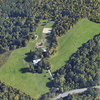Survey of historic resources can be used for economic and leisure planning
NEW SCOTLAND — The rail trail that runs from Albany to Voorheesville is like “a new railroad — a different type of engine for development,” says Alan Kowlowitz, who chairs the joint village and town Historic Preservation Commission.
Voorheesville and New Scotland were just awarded a $10,000 grant from the Preservation League of New York State to fund a cultural resource survey for the village and the hamlets of New Salem and New Scotland.
“I guess they liked it,” said Kowlowitz of the commission’s application. “We had the highest rated application in this cycle.”
At its 2021 meeting, an independent grant panel selected 32 applicants in 25 counties across the state to receive support totaling about $300,000.
Kowolowitz’s commission had wanted to survey the entire town but the cost was too high, he said.
The hamlets of New Scotland and New Salem and the village of Voorheesville are all tied together through a shared railroad history, he said, and as launching points for historic Helderberg vacationers.
The two hamlets and village span less than five miles but contain a diversity of historic buildings and rural landscapes.
The cultural resource survey will help identify the character-defining features of the village and the town’s hamlets so that each may put policies in place to support sustainable, sensitive development while preserving what makes each unique, according to the grant application.
“We wanted a grant tied to the town and village master plans. Each has a component of historic preservation and appropriate economic and leisure development,” Kowlowitz said.
Kowlowitz is particularly interested in linking historic preservation with open space. He gave the example of the historic Bender Melon Farm. The property now has a conservation easement through the Mohawk Hudson Land Conservancy
In recent years, the huge century-old Hilton barn, slated for demolition to make way for a housing development, was saved by moving it across Route 85A where it is being developed for recreational use.
For the grant application, when Kowlowitz drew up the boundaries for the hamlet of New Scotland, he said, “I used an older boundary that included the Hilton barn and the Bender Melon Farm.”
So they will be included in the survey. Kowlowitz has heard that, while the main farmhouse was moved from the Bender property years ago, there may still be outbuildings standing.
The commission is working with Walter Wheeler, an architectural historian at Hartgen Archeological Associates based in Rensselaer. Kowlowitz is serving as the project contact, communicating between the consultant and the municipalities.
The survey will get underway in the fall and could take up to a year to complete, Kowlowitz said. Each building will be mapped and photographed and the information will be uploaded to the state’s Cultural Resources Information System, where it will be available to the public.
At least 300 properties may be eligible for the state or national registries, he said.
The cost of the survey is $17,400 and, in addition to the $10,000 grant, the New Scotland Historical Association, the village of Voorheesville, and the town of New Scotland have each committed to donating $2,000, Kowlowitz said.
To cover the remaining $1,400, Kowlowitz is in the process of applying for a grant from the Voorheesville Community and School Foundation and also plans to fundraise, he said.
The state application process was difficult, he said, because it is not geared for two different municipalities to work together.
He commended New Scotland Supervisor Douglas LaGrange and former Voorheesville mayor, Bob Conway, as well as singling out Voorheesville Trustee Sarita Winchell and New Scotland Councilman Daniel Leinung for praise in shepherding the application through.
“We envision having an informational resource that can be used as a platform for economic and leisure planning,” Kowlowitz said; the survey may also lead to the designation of a historic district.
Kolowitz took photographs to submit with the application, some of which are posted with this article online.
“Voorheesville has a sense of itself,” he said.
But Kowlowitz was enlightened when he stood near the old Dutch Reformed Church on New Scotland Road at the center of New Salem in the midst of a cluster of houses built in the early to middle 1800s with the Helderbergs as a backdrop.
“You see it through new eyes,” he said.
Kowlowitz described the survey as a tool.
He concluded, “Like any tool, it has to be used.”



